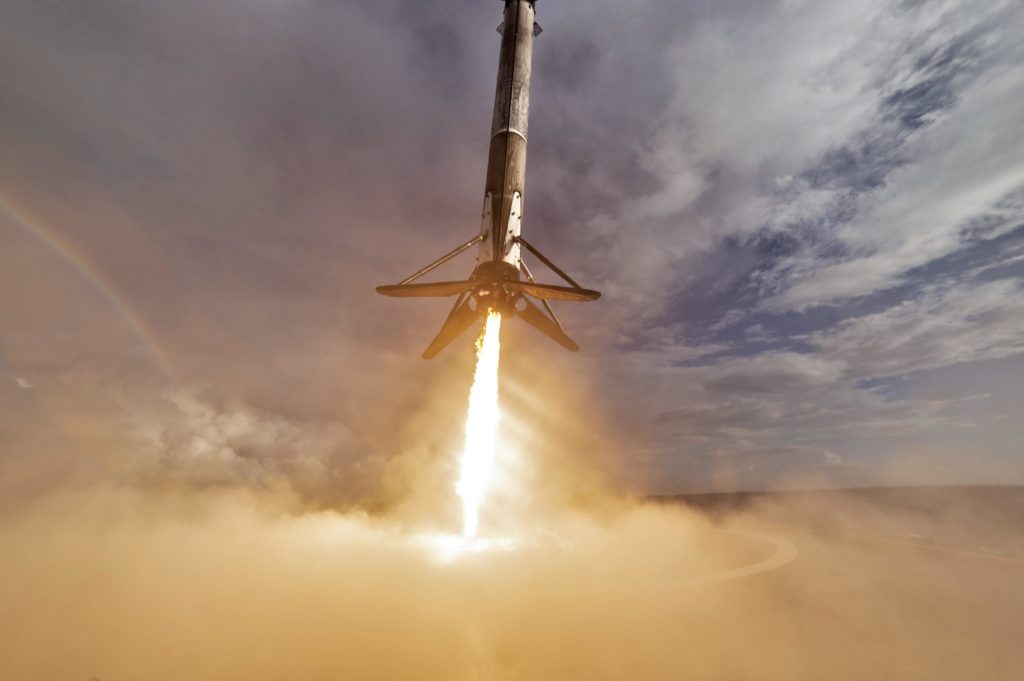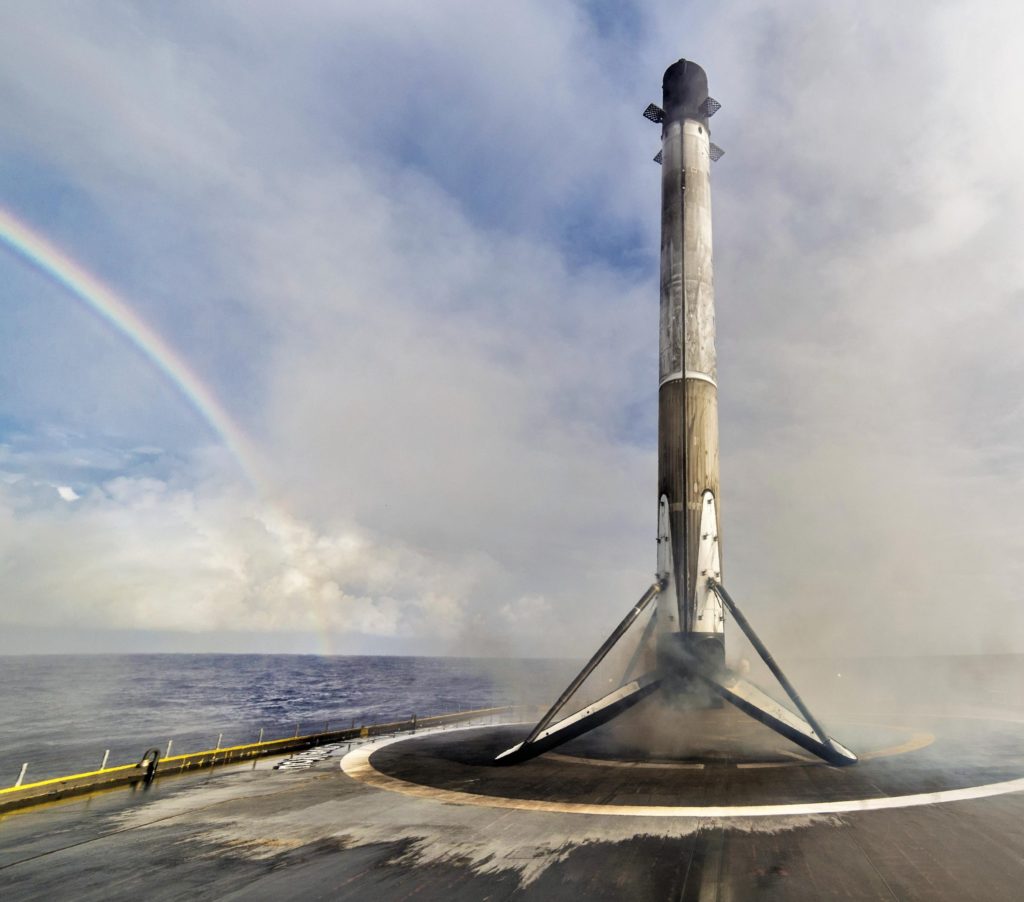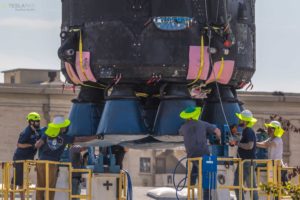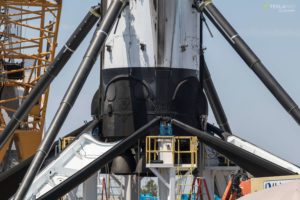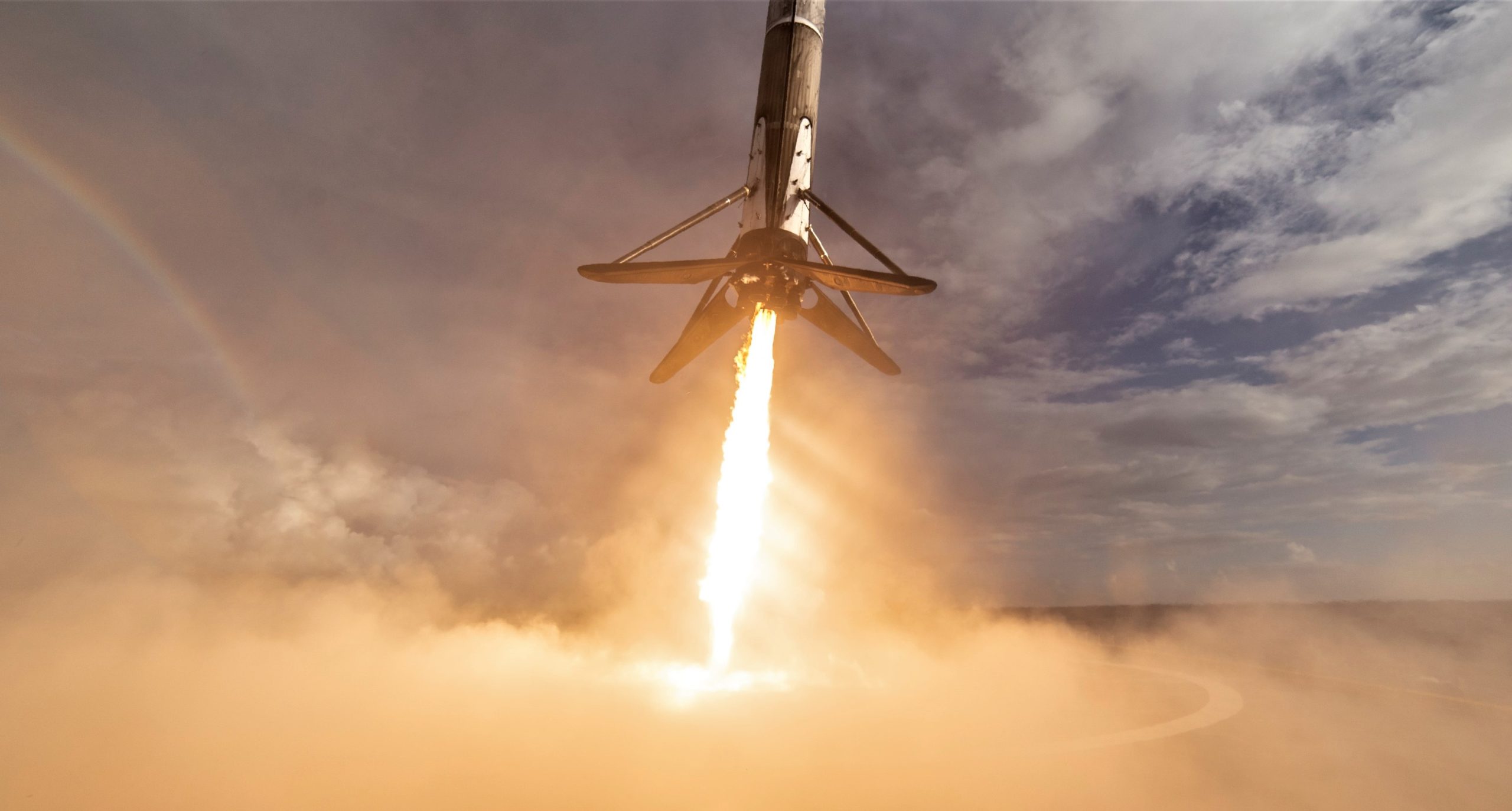
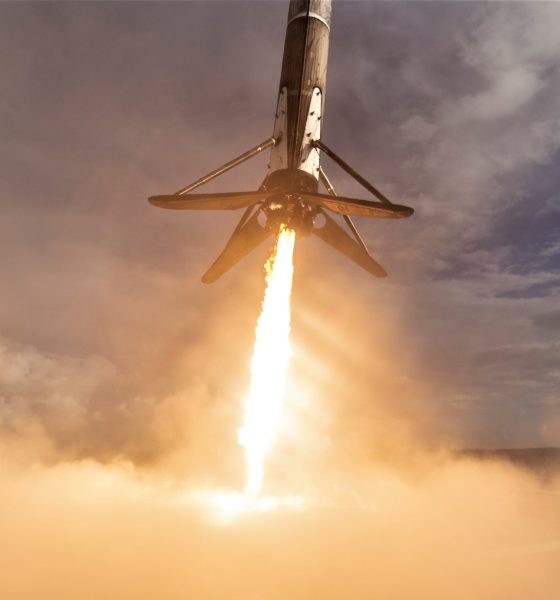
News
Follow a SpaceX Falcon 9 Block 5 booster recovery from start to finish [video]
All major aspects of SpaceX’s most recent Falcon 9 Block 5 booster recovery have been documented from start to finish, offering a solid glimpse into the work that actually goes into getting a rocket booster from the deck of a SpaceX drone ship to one of the company’s many hangars for inspections, repairs, and refurbishment.
Filmed by USLaunchReport, a SpaceX-focused nonprofit staffed by U.S. veterans, the group’s coverage of a variety of SpaceX events may not always offer the highest production quality, but the sheer tenacity and patience of those behind the cameras allow them to capture unique and interesting events that almost nobody else is keen to wait around for.
SpaceX Falcon 9 Block 5 booster sails into port aboard droneship OCISLY after successful reusehttps://t.co/zQtidwzvhp
— TESLARATI (@Teslarati) November 21, 2018
Over the course of four videos focused on SpaceX’s recovery of Falcon 9 Block 5 booster B1047, USLaunchReport offered good views of four major events that occur during all rocket recovery operations: the drone ship’s return to port, Falcon 9’s move from ship to shore, the booster’s landing leg removal (or retraction), and the booster’s transfer from a vertical to horizontal orientation and transport by road back to a SpaceX hangar.
Of Course I Still Love You arrives at Port Canaveral
As with all of Falcon 9’s drone ship landings, B1047 came to a rest on a station-keeping OCISLY several hundred miles east of the Florida coast, coincidentally landing directly in front of a giant rainbow cued by rain clouds, both visible in the background. In theory, B1047’s second landing should by no means be the rocket’s last: if Falcon 9 Block 5’s first stage upgrades are as successful as they hoped to be, the rocket could well see a productive life of 100 launches or more between now and BFR’s complete takeover.
- Falcon 9 B1047 approaches its second successful landing aboard OCISLY. (SpaceX)
- In a more perfect world, Falcon 9 would have been responsible for the rainbow. (SpaceX)
For at least the next 5-10 years, however, SpaceX followers will continue to be treated to spectacular Falcon 9 and Falcon Heavy booster recoveries, particularly the moment when each booster sails through the narrow mouth of Port Canaveral or Port of Los Angeles, offering spectators almost unbeatable views of just-landed SpaceX rockets.
SpaceX – Last Ten Miles To Dock.
Next Men at Work. B1047.2 https://t.co/6C4YDhUpJ6— Mike Wagner (@USLaunchReport) November 21, 2018
Falcon 9’s lift from ship to shore
Soon after the drone ship docks in port, SpaceX recovery technicians install a brace and lifting jig that attaches to Falcon 9’s booster interstage, using the same mechanisms that connect the first stage to the second stage prior to stage separation. The interstage’s mechanical actuators are strong enough to support – at a minimum – the entire weight of an empty Falcon 9 booster, allowing SpaceX to simply attach the jig and lift Falcon 9 off of the drone ship with any number of large but commercially available cranes.
Rather than directly lowering the rocket and allowing it to rest directly on its landing legs again, SpaceX technicians make use of a custom-built stand that acts as a sort of barebones, static replica of the mounts Falcon 9s are attached to at SpaceX launch pads. Structurally optimized to allow Falcon 9 and Heavy to be held down on the launch pad while operating at full thrust, a series of four solid-metal attachment points interface with those hold-down clamps, attach to Falcon 9’s four landing legs, and offer an easily accessible and structurally sound method of sitting a booster upright (sans legs) and maneuvering it during recovery operations.
- An excellent look at Block 5 booster B1048’s aft, showing off two of four launch clamp attachment points. (Pauline Acalin)
- A view of Falcon 9 resting on said clamp attach points. (Pauline Acalin)
Once Falcon 9 is sat stably atop its recovery stand, SpaceX technicians remove the rocket’s four landing legs and their associated telescoping deployment assemblies. While SpaceX has recently begun to attempt the in-situ retraction and stowage of Falcon 9 landing legs once returned to land, a number of experimental retraction attempts appear to have produced less than satisfactory results. This time around, the retraction jig was visibly stripped and SpaceX technicians did not attempt any leg retractions. However, those recovery technicians are now so experienced and familiar with the optimized procedures that Falcon 9 booster can go from port arrival to horizontal transport to a SpaceX hangar in just a little over 48 hours, and that trend continued with B1047.2.
Good observations by @USLaunchReport. The lifting cap was stripped of the leg retraction hardware, so SpaceX is presumably changing the design of the retraction system.https://t.co/WRwLNbLKqF
— Michael Baylor (@MichaelBaylor_) November 23, 2018
From | to __
Although Falcon 9 and Heavy rockets come into their prime once vertical, the rockets spend the vast majority of their lives horizontal, either in transport from facility to facility or stationary inside a SpaceX hangar, awaiting launch, undergoing integration, or being refurbished. Translating Falcon 9’s massive ~30-ton, 135-foot-tall (41m) booster from vertical to horizontal is a feat within itself, requiring the coordinated use of two large cranes, multiple technicians with guidelines, and one of several giant booster transport jigs owned by SpaceX.
SpaceX’s seasoned recovery technicians make it look easy, but the reality is in almost polar opposition. The fact that Falcon 9’s structure is built primarily of aluminum-lithium alloy tanks with walls maybe half a centimeter (~5 mm) thick certainly doesn’t make this process any easier, as even the slightest misstep or tank depressurization (Falcon 9 is almost always pressurized with nitrogen when horizontal) could structurally compromise the rocket and result in irreparable damage.
The cherry on top
A reliable crowdpleaser, the last critical step in any Falcon 9 or Falcon Heavy recovery is the booster’s careful transport – by road – from its port of call (or landing zone) to a dedicated SpaceX hangar (or factory), where the rocket can be far more thoroughly inspected, repaired, and maintained between launches. With Falcon 9 Block 5’s May 2018 introduction, the latter segment has become more important than ever before, as the upgraded rockets are already routinely conducting launches with as few as three months between them, bringing SpaceX closer than ever before to realizing a long-term aspiration of operating a fleet of rapidly and (relatively) easily reusable orbital-class rockets.
Often slowly driving just a few dozen feet from passing bystanders and traffic, this short few-mile trip from Port Canaveral to either Kennedy Space Center (KSC) or Cape Canaveral Air Force Station (CCAFS) is typically done with Falcon 9 boosters entirely uncovered, aside from nine small booties that cover their nine Merlin 1D engines. Without unique and easily missed moments like this, it might well be just shy of impossible to get fewer than several hundred feet away from an operational SpaceX rocket, certainly a luxury but one that would still be sorely missed.
All things considered, the crew at USLaunchReport ought to be thanked for their relentless patience and commitment to getting the shot. For those of us who mean to resist the tendency for SpaceX’s sheer inertia to rapidly make the extraordinary all but mundane, these long, highly detailed, and often esoteric videos will (hopefully) never get old.
For prompt updates, on-the-ground perspectives, and unique glimpses of SpaceX’s rocket recovery fleet check out our brand new LaunchPad and LandingZone newsletters!

News
Tesla FSD fleet is nearing 7 billion total miles, including 2.5 billion city miles
As can be seen on Tesla’s official FSD webpage, vehicles equipped with the system have now navigated over 6.99 billion miles.

Tesla’s Full Self-Driving (Supervised) fleet is closing in on almost 7 billion total miles driven, as per data posted by the company on its official FSD webpage.
These figures hint at the massive scale of data fueling Tesla’s rapid FSD improvements, which have been quite notable as of late.
FSD mileage milestones
As can be seen on Tesla’s official FSD webpage, vehicles equipped with the system have now navigated over 6.99 billion miles. Tesla owner and avid FSD tester Whole Mars Catalog also shared a screenshot indicating that from the nearly 7 billion miles traveled by the FSD fleet, more than 2.5 billion miles were driven inside cities.
City miles are particularly valuable for complex urban scenarios like unprotected turns, pedestrian interactions, and traffic lights. This is also the difference-maker for FSD, as only complex solutions, such as Waymo’s self-driving taxis, operate similarly on inner-city streets. And even then, incidents such as the San Francisco blackouts have proven challenging for sensor-rich vehicles like Waymos.
Tesla’s data edge
Tesla has a number of advantages in the autonomous vehicle sector, one of which is the size of its fleet and the number of vehicles training FSD on real-world roads. Tesla’s nearly 7 billion FSD miles then allow the company to roll out updates that make its vehicles behave like they are being driven by experienced drivers, even if they are operating on their own.
So notable are Tesla’s improvements to FSD that NVIDIA Director of Robotics Jim Fan, after experiencing FSD v14, noted that the system is the first AI that passes what he described as a “Physical Turing Test.”
“Despite knowing exactly how robot learning works, I still find it magical watching the steering wheel turn by itself. First it feels surreal, next it becomes routine. Then, like the smartphone, taking it away actively hurts. This is how humanity gets rewired and glued to god-like technologies,” Fan wrote in a post on X.
News
Tesla starts showing how FSD will change lives in Europe
Local officials tested the system on narrow country roads and were impressed by FSD’s smooth, human-like driving, with some calling the service a game-changer for everyday life in areas that are far from urban centers.

Tesla has launched Europe’s first public shuttle service using Full Self-Driving (Supervised) in the rural Eifelkreis Bitburg-Prüm region of Germany, demonstrating how the technology can restore independence and mobility for people who struggle with limited transport options.
Local officials tested the system on narrow country roads and were impressed by FSD’s smooth, human-like driving, with some calling the service a game-changer for everyday life in areas that are far from urban centers.
Officials see real impact on rural residents
Arzfeld Mayor Johannes Kuhl and District Administrator Andreas Kruppert personally tested the Tesla shuttle service. This allowed them to see just how well FSD navigated winding lanes and rural roads confidently. Kruppert said, “Autonomous driving sounds like science fiction to many, but we simply see here that it works totally well in rural regions too.” Kuhl, for his part, also noted that FSD “feels like a very experienced driver.”
The pilot complements the area’s “Citizen Bus” program, which provides on-demand rides for elderly residents who can no longer drive themselves. Tesla Europe shared a video of a demonstration of the service, highlighting how FSD gives people their freedom back, even in places where public transport is not as prevalent.
What the Ministry for Economic Affairs and Transport says
Rhineland-Palatinate’s Minister Daniela Schmitt supported the project, praising the collaboration that made this “first of its kind in Europe” possible. As per the ministry, the rural rollout for the service shows FSD’s potential beyond major cities, and it delivers tangible benefits like grocery runs, doctor visits, and social connections for isolated residents.
“Reliable and flexible mobility is especially vital in rural areas. With the launch of a shuttle service using self-driving vehicles (FSD supervised) by Tesla in the Eifelkreis Bitburg-Prüm, an innovative pilot project is now getting underway that complements local community bus services. It is the first project of its kind in Europe.
“The result is a real gain for rural mobility: greater accessibility, more flexibility and tangible benefits for everyday life. A strong signal for innovation, cooperation and future-oriented mobility beyond urban centers,” the ministry wrote in a LinkedIn post.
News
Tesla China quietly posts Robotaxi-related job listing
Tesla China is currently seeking a Low Voltage Electrical Engineer to work on circuit board design for the company’s autonomous vehicles.

Tesla has posted a new job listing in Shanghai explicitly tied to its Robotaxi program, fueling speculation that the company is preparing to launch its dedicated autonomous ride-hailing service in China.
As noted in the listing, Tesla China is currently seeking a Low Voltage Electrical Engineer to work on circuit board design for the company’s autonomous vehicles.
Robotaxi-specific role
The listing, which was shared on social media platform X by industry watcher @tslaming, suggested that Tesla China is looking to fill the role urgently. The job listing itself specifically mentions that the person hired for the role will be working on the Low Voltage Hardware team, which would design the circuit boards that would serve as the nervous system of the Robotaxi.
Key tasks for the role, as indicated in the job listing, include collaboration with PCB layout, firmware, mechanical, program management, and validation teams, among other responsibilities. The role is based in Shanghai.
China Robotaxi launch
China represents a massive potential market for robotaxis, with its dense urban centers and supportive policies in select cities. Tesla has limited permission to roll out FSD in the country, though despite this, its vehicles have been hailed as among the best in the market when it comes to autonomous features. So far, at least, it appears that China supports Tesla’s FSD and Robotaxi rollout.
This was hinted at in November, when Tesla brought the Cybercab to the 8th China International Import Expo (CIIE) in Shanghai, marking the first time that the autonomous two-seater was brought to the Asia-Pacific region. The vehicle, despite not having a release date in China, received a significant amount of interest among the event’s attendees.
